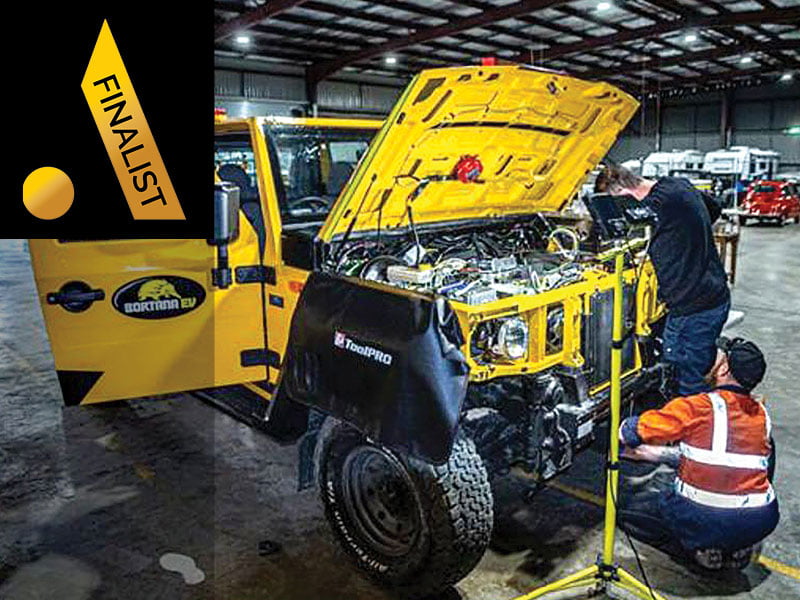Deep in an underground mine the tunnel roof looms high above the heads of the miners and mechanics and electricians as they go about their day’s work under strings of bright industrial lighting.
Cavernous but enclosed, these are workplaces often humming with machinery at all hours of the day and night and fraught with the perils those machines bear with them.
The air is hot with the bodies of hundreds of men and women, engines, the friction entailed in the extraction of earth from earth. There are issues of ventilation, of dust and debris, of grease and noise and sharp objects.
One of the problems inherent in modern mining are the heat and exhaust generated by the multi-tonne vehicles that cut and break stone and haul materials and people in and out of the depths. This, at least, is a problem potentially solved.

As 3ME Technology chief executive Justin Bain says, the industry really banded together to support the development of a battery system that could be deployed safely and reliably in a mining environment.
3ME Technology is a finalist in the Advanced Manufacturing, Defence, Energy and Renewables and Mining Tech categories of the inaugural InnovationAus Awards for Excellence.
“Mining applications require a very high safety standard,” says Mr Bain. “This isn’t taking a standard battery system and trying to apply it to these high reliability environments. We have purpose-designed a battery system to meet these high-performance, functional safety requirements.”
“We’re removing the fumes, removing the exhaust. But we’re also reducing the heat, reducing the noise, reducing the vibrations, so we’re effectively creating an overall safer and more effective working environment for underground miners.”
The result was a unique lithium-ion blade battery system that looks more like a very tightly packed and narrow-drawered filing cabinet than any battery you’ve probably seen before.
They can be built in flexible configurations to power vehicles ranging up to a 20-tonne integrated tool carrier, with development underway to tackle the even larger vehicles used in Australia’s vast open cut mines as well.
The battery system can be retrofitted to existing vehicles and makes use of a 1000 volt charging system that is compatible with existing electrical systems used inside mines.
Charging can be conducted via a battery swap for machines that just need to keep going without a break 24/7 or there are a range of other charging options to fit in with existing known mining infrastructure and operation schedules.
“It’s not a one size fits all charging solution,” Mr Bain says.
Additionally, when a blade looks like it’s about to “go down” that small section of the battery can be swapped out, meaning the whole system is more reliable and has the longest possible life.
The backwards compatibility of the system is no accident. 3ME has a deep knowledge bank of engineers that come from the mining sector and who have on the ground experience with operations.
“We do have a number of subject matter experts within the company that are from both the underground mining industry and also the defence industry,” he says.
Mr Bain’s own background is in the military, which is another market the battery is designed to tap into, powering heavy armoured defence vehicles.
After their lives as heavy vehicle batteries, the blades are so robust they can then be redeployed into the community as reserve power for councils.
“When when they finished their first life in mining vehicles, were then able to redeploy them into static storage environments where they can have a long Second Life before they then decommission and recycle at the end of life,” Mr Bain says.
While mining vehicles are their initial target market, 3ME has also received interest and is in discussions with a possible aeronautics industry partner.
3ME Technology is a finalist in the Advanced Manufacturing, Defence, Energy and Renewables and Mining Tech categories of the InnovationAus Awards for Excellence 2021.
Do you know more? Contact James Riley via Email.
